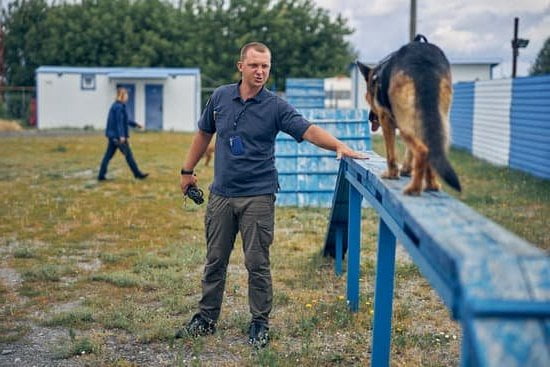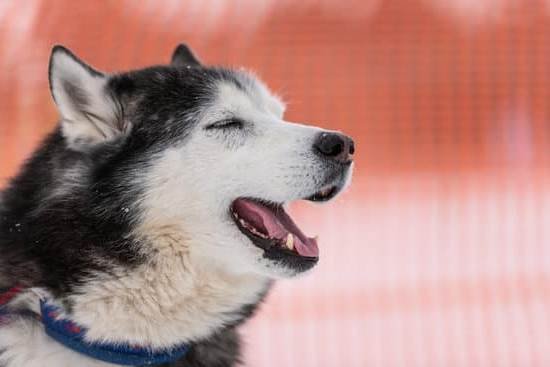Training your dog to come outside is an essential skill that every pet owner should master. Whether you want to take your furry friend for a walk in the park, enjoy a day at the beach, or simply let them out into the yard, having a reliable recall command is crucial for their safety and your peace of mind.
In this article, we will explore the key steps and techniques for successfully training your dog to come outside, from establishing a strong bond with your pet to overcoming common challenges along the way.
Establishing a strong bond with your dog is the foundation for successful training. Through positive reinforcement and consistent practice, you can build trust and communication with your pet, making it easier for them to understand and follow your commands. Basic obedience training plays a pivotal role in teaching your dog to respond to commands, including the all-important “come” cue. With patience and dedication, you can instill good behavior in your furry companion and foster a harmonious relationship.
Using treats and praise as positive reinforcement can be highly effective when training your dog to come outside. By rewarding desired behavior, you can encourage them to respond eagerly to your call.
Choosing the right training tools such as leashes, collars, and harnesses also plays a significant role in ensuring that your dog is comfortable and secure during outdoor activities. With these foundational principles in mind, we will now delve into the specific steps for teaching your dog to come outside, as well as how to address common challenges that may arise along the way.
Establishing a Strong Bond With Your Dog
Understanding Your Dog’s Needs and Behavior
Before you can effectively train your dog to come outside, it’s crucial to establish a strong bond with your furry friend. This means understanding their needs, behavior, and communication style. Dogs thrive on attention, affection, and positive interactions with their owners. By taking the time to observe and understand your dog’s body language, vocalizations, and preferences, you can develop a deeper connection that forms the basis for successful training.
Building Trust Through Positive Interactions
One of the key components of bonding with your dog is building trust. This involves creating a safe and nurturing environment where your dog feels secure and comfortable. Spend quality time with your dog engaging in activities they enjoy, such as playtime, walks, or simply snuggling together. By consistently providing love, care, and attention, you’ll earn your dog’s trust and loyalty, making them more receptive to training.
Communication and Consistency
Effective communication is essential for building a strong bond with your dog. Pay attention to how your dog responds to different cues, commands, and gestures. Use clear and consistent signals to convey your expectations and provide gentle guidance when necessary. By establishing a mutual understanding through positive reinforcement and consistency in your interactions, you’ll lay the groundwork for successful training sessions focused on teaching your dog to come outside.
Basic Obedience Training
Once you have established a strong bond with your dog, the next step in training them to come outside is teaching them basic obedience. Basic obedience training is essential for building communication and trust between you and your dog. It also sets the foundation for more advanced training in the future. The key commands to focus on when training your dog to come outside are “come” and “stay”.
When teaching your dog to respond to commands, consistency is crucial. Use clear and concise commands, and always follow through with positive reinforcement when they obey. Start training in a quiet, distraction-free environment, then gradually introduce more challenging scenarios as your dog becomes more proficient at following commands.
One effective method for teaching your dog to respond to commands is using positive reinforcement. This involves rewarding your dog with treats, praise, or playtime when they successfully execute a command. Positive reinforcement not only motivates your dog to listen but also strengthens the bond between you and your furry companion. Remember to be patient and consistent with your training, as it may take time for your dog to fully understand and obey the commands.
Positive Reinforcement
Choose the Right Treats
When using treats as a form of positive reinforcement, it’s essential to select ones that your dog finds particularly enticing. Small, soft treats that can be easily consumed are often the most effective. It’s also important to consider the nutritional content of the treats and not overdo it, especially if your dog has specific dietary restrictions or health concerns.
Timing Is Crucial
In order for positive reinforcement to be effective, it’s essential to provide treats and praise immediately after your dog exhibits the desired behavior. This helps them understand exactly what they did right and creates a strong association between the action and the reward.
Using Verbal Praise
In addition to using treats, verbal praise is another powerful tool for reinforcing good behavior. When your dog responds to the “come” command outside, make sure to offer enthusiastic verbal praise such as “good boy/girl” or “well done.” This combination of treats and vocal affirmation helps solidify their understanding of what is expected of them.
By utilizing positive reinforcement techniques like these, you can effectively motivate your dog to come outside when called and create a positive training experience for both you and your furry companion.
Choosing the Right Training Tools
When it comes to training your dog to come outside, choosing the right training tools is essential. Leashes, collars, and harnesses are all important components of your dog’s outdoor training gear. These tools not only help you maintain control of your dog but also provide safety and security during training sessions.
Leashes come in a variety of materials, lengths, and styles. A standard 6-foot leash is suitable for most outdoor training activities, allowing your dog enough freedom to move around while still keeping them close and under control. Retractable leashes can also be useful for more advanced training exercises that require different levels of freedom for your dog.
Collars are another essential training tool, with options such as flat collars, martingale collars, and head collars available. It’s important to choose a collar that fits properly and comfortably on your dog while providing you with the ability to easily attach a leash for outdoor training sessions.
Harnesses are an alternative to traditional collars and can be particularly useful for dogs who tend to pull or have respiratory issues. They distribute pressure more evenly across the body and reduce strain on the neck and throat, making them a great option for dogs undergoing outdoor training.
Overall, selecting the right leash, collar, or harness for your dog plays a crucial role in their success during outdoor training. Each tool has its own advantages and considerations depending on your dog’s breed, size, and behavior. By choosing high-quality gear that fits properly and is comfortable for your furry friend, you’ll set yourself up for successful outdoor training sessions.
| Training Tool | Advantages |
|---|---|
| Leashes | Provides control while allowing movement |
| Collars | Options available based on specific needs |
| Harnesses | Eases pressure on neck/throat; suitable alternatives |
Steps for Teaching Your Dog to Come Outside
Training your dog to come outside is an essential part of ensuring their safety and well-being. Whether you want to take your dog for a walk, play in the park, or simply enjoy some time together in the yard, teaching them to come when called is crucial. Here are some steps you can follow to train your dog to come outside:
First, start by practicing indoors in a quiet and familiar environment. Use positive reinforcement such as treats and praise to encourage your dog to come when called. You can start by standing a short distance away from your dog and calling their name followed by the command “come.” When they respond correctly, reward them with a treat and plenty of praise. Gradually increase the distance between you and your dog as they become more reliable in responding to the command.
Once your dog consistently responds to the “come” command indoors, it’s time to take the training outdoors. Start in a secure and enclosed area such as a fenced yard or an empty park where there are minimal distractions. Repeat the same process of calling your dog and rewarding them for coming when called. It’s important to continue using positive reinforcement to maintain their motivation and enthusiasm for coming when called.
As your dog becomes more proficient at coming outside in controlled environments, gradually introduce more distractions such as other people, animals, or enticing smells. This will help them generalize the behavior and learn to respond even in challenging situations. Remember to remain patient and consistent with your training, as it may take time for your dog to fully master this important skill.
| Training Environment | Key Factors |
|---|---|
| Indoors | Quiet, familiar setting for initial training |
| Outdoors | Secure and enclosed area with minimal distractions for outdoor training |
| Distractions | Gradually introduce distractions such as people, animals, or smells during advanced training |
Common Challenges and How to Overcome Them
Dealing with distractions and stubborn behavior is a common challenge when training your dog to come outside. However, with patience and consistency, these challenges can be overcome.
One of the most effective ways to deal with distractions is by gradually exposing your dog to them during training sessions. Start in a quiet and familiar environment, then slowly introduce mild distractions such as a new person or another well-behaved dog. Gradually increase the level of distractions as your dog becomes more responsive to your commands.
It’s important to remember that every dog is different, and some may be more stubborn than others. When dealing with stubborn behavior, it’s essential to stay calm and avoid getting frustrated. Instead, use positive reinforcement techniques such as treats and praise to encourage the desired behavior. Additionally, break down the training into smaller steps and be patient with your dog as they learn to come outside on command.
To overcome these challenges, consider the following tips:
- Gradually introduce distractions during training sessions
- Use positive reinforcement to encourage desired behavior
- Stay patient and calm when dealing with stubborn behavior
By consistently practicing these strategies, you can effectively overcome common challenges and successfully train your dog to come outside, strengthening the bond between you and your furry friend.
Consistency Is Key
Once you have successfully taught your dog to come outside, it is important to maintain the training and reinforce the behavior. Consistency is key when it comes to ensuring that your dog continues to respond to your commands. This means practicing regularly and using positive reinforcement to encourage and reward their good behavior.
To maintain the training, it is essential to continue practicing the “come” command in various outdoor environments. Start in a familiar and quiet area, then gradually move on to more challenging settings with distractions. By doing so, you are reinforcing the behavior and teaching your dog to respond regardless of the environment. Consistency in training will help solidify your dog’s understanding of the command and ensure that they continue to come when called.
In addition to ongoing practice, reinforcing the behavior through positive reinforcement is crucial. Make sure to always have treats or favorite toys on hand when practicing the command outside. Every time your dog comes when called, be sure to reward them immediately with praise and a treat.
This positive reinforcement will strengthen their association between coming outside and receiving rewards, making them more likely to repeat the behavior in the future. Overall, consistency in training and reinforcing the desired behavior will help maintain a strong recall response in your dog.
Troubleshooting
If your dog is still having trouble coming outside despite your consistent training efforts, don’t worry. It’s not uncommon for some dogs to have difficulty with certain behaviors, and there are steps you can take to address this issue. Here are some troubleshooting tips to help you encourage your dog to come outside:
- Assess the environment: Take a look at the outdoor space where you want your dog to come. Are there any potential triggers or distractions that may be causing hesitation? Identifying and addressing these factors can make a big difference.
- Desensitization training: If your dog seems fearful or anxious about going outside, you may need to gradually introduce them to the outdoor environment. Start by simply sitting near the door with your dog and gradually work up to going outside for short periods of time.
- Seek professional help: If you’ve tried various methods and your dog still refuses to come outside, it may be beneficial to seek guidance from a professional dog trainer or behaviorist. They can provide personalized support and create a tailored plan to address the specific challenges your dog is facing.
Remember, every dog is unique, and patience is key when troubleshooting training issues. By staying proactive and seeking appropriate assistance when needed, you can help your furry friend overcome any obstacles they may have in coming outside.
Conclusion
In conclusion, training your dog to come outside is not only important for their safety and well-being but also for the enjoyment of spending time outdoors with your furry companion. By establishing a strong bond with your dog and implementing basic obedience training, you are laying the foundation for successful outdoor training.
Positive reinforcement through treats and praise, along with the use of the right training tools, can greatly aid in teaching your dog to respond to commands and come outside.
As you continue to work with your dog on this aspect of their training, it’s important to remember that consistency is key. By maintaining the training and reinforcing the behavior, you will help solidify their understanding of coming outside when called. Additionally, being prepared for common challenges such as distractions or stubborn behavior will allow you to tackle these obstacles effectively.
Finally, if you find that your dog still won’t come outside after consistent training efforts, it’s important to troubleshoot and reassess your approach. Seeking guidance from a professional trainer or behaviorist may provide valuable insight into addressing any underlying issues. Ultimately, successfully training your dog to come outside will lead to greater freedom and enjoyment for both you and your canine companion as you explore the great outdoors together.
Frequently Asked Questions
How Do You Teach a Dog to Tell You to Go Outside?
Teaching a dog to tell you to go outside can be done through positive reinforcement and consistent training. Start by associating a specific signal, like a bell or scratching at the door, with going outside.
Whenever your dog performs this action, reward them with praise, treats, or the opportunity to go outside. Consistency is key in reinforcing this behavior, so be patient and continue the training until your dog learns to communicate their need to go outside.
What Do You Do When Your Dog Won’t Come When Called?
When your dog won’t come when called, it’s important not to chase after them as this can reinforce their reluctance to come to you. Instead, use positive reinforcement by rewarding them with treats or praise when they do come to you.
Avoid using negative consequences or punishment as this can create fear or distrust in your dog. Additionally, work on strengthening their recall command with regular training sessions in a safe and enclosed area.
What to Do When Your Dog Won’t Come in From Outside?
If your dog won’t come in from outside, try not to chase after them as this may turn it into a game for them. Instead, use positive reinforcement by calling them inside using an excited tone of voice and offering treats or toys as an incentive.
You can also practice the recall command during training sessions so that your dog learns to respond when called. It’s important to remain patient and consistent in training your dog to come inside when called.

Welcome to the blog! I am a professional dog trainer and have been working with dogs for many years. In this blog, I will be discussing various topics related to dog training, including tips, tricks, and advice. I hope you find this information helpful and informative. Thanks for reading!





